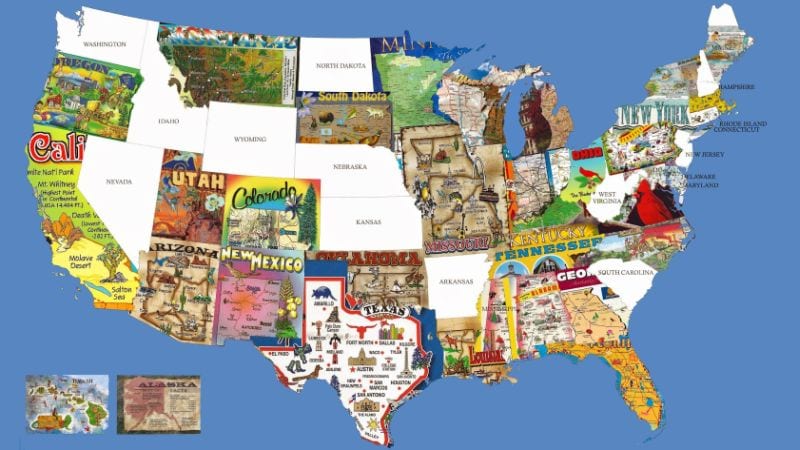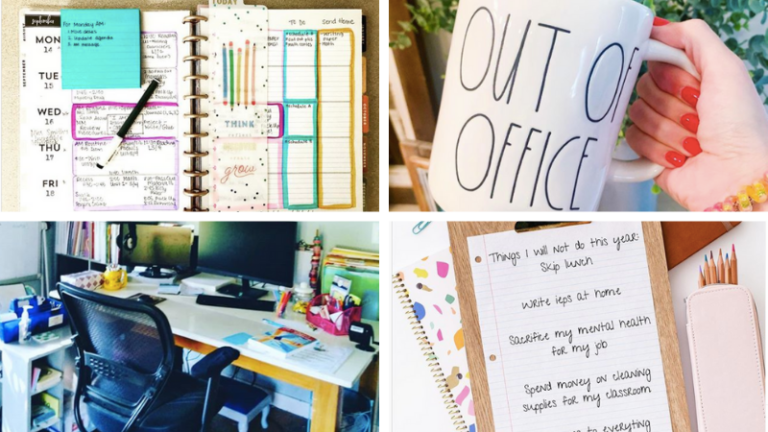Ready for a fun and interactive project to teach United States geography? Then it’s time to do a classroom postcard exchange! Join other classrooms around the country to exchange postcards, facts, and personal messages from near and far. Kids will be exposed to parts of the country very different from their own, while enjoying the excitement of waiting for the daily mail. Here are five easy steps to get your own postcard exchange going. (We’ve included information here for doing this in the United States, but this project can easily be tweaked for a global exchange.)
1. Create or join a classroom postcard exchange list.
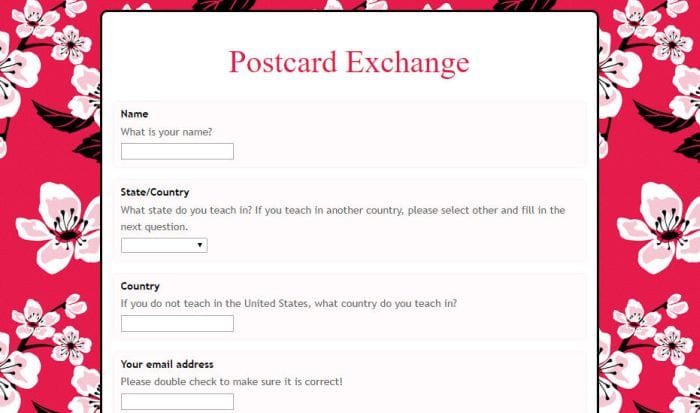
It might seem overwhelming to try to find classrooms in other states willing to participate in your exchange, but it’s not as hard as you think! The internet is full of teachers looking to do this project with their own classes. Do a web search to find teachers who are already organizing an exchange, and join their group. Or, create your own sign up list (sites like Sign Up Genius or Google Forms make this easy). Remember to ask each participant to provide their name, address, and email address. Then, spread the word.
- Post your project on a teacher Facebook group like the WeAreTeachers HELPLINE.
- Join a classroom exchange group on Facebook like The Postcard Exchange.
- Connect with other postcard exchange teachers on chat boards like proteacher.net.
2. Collect postcards (and stamps) to send.
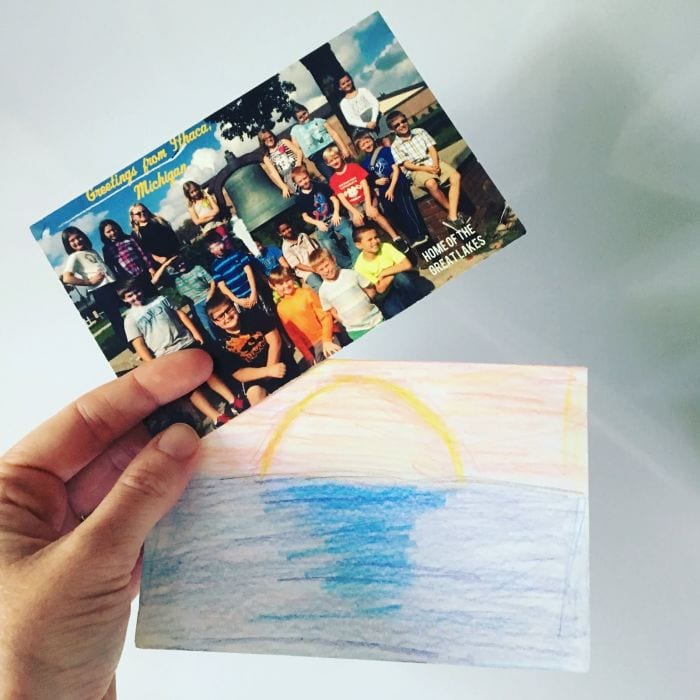
Photo: Teachin’ By the Bay
Decide what type of postcard(s) you’d like your class to send to the classrooms on your list. Many teachers ask each student to bring in 2-3 stamped postcards as a homework assignment. Some classrooms choose to create their own custom postcards, using a class photo at a local landmark. If money is an issue, have students draw their own postcards on heavy cardstock instead.
[contextly_auto_sidebar]
3. Compose the postcard message.
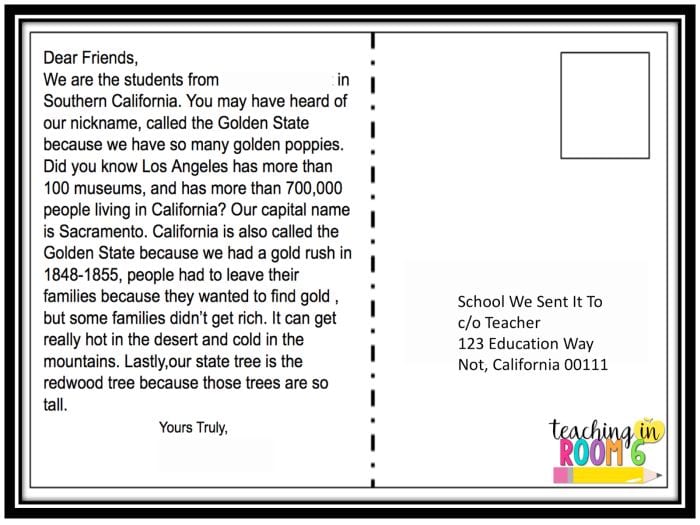
Photo: Teaching in Room 6
A meaningful message makes the classroom postcard exchange special. Have your kids work individually, in small groups, or as a class to compose a message. Encourage them to include a fact about your state and some of their own favorite things about where they live. Edit and proof-read these messages as you would any writing project. Once the messages are ready to go, you can have each student hand-write a few cards, or print out the messages and attach them to the postcards instead. (This allows you to include more information, generally.)
4. Address and mail your postcards.
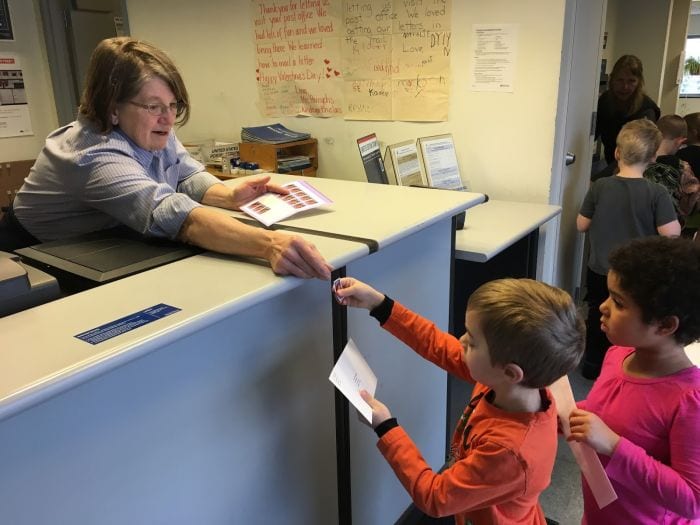
Photo: Mrs. Parzych’s Kindergarten
You can use pre-printed address labels for this task, or make this another learning opportunity for your students. Many teachers note that their kids find it challenging to address postcards correctly (especially in the space allowed), so plan to practice in advance on separate sheets of paper. Once they’re ready to go, hold a “mailing ceremony.” Perhaps you can arrange a class trip to the local post office to send them in person. If not, invite the school secretary or a local mail carrier to your classroom and entrust them with your precious cargo.
5. Learn from the postcards you receive in return
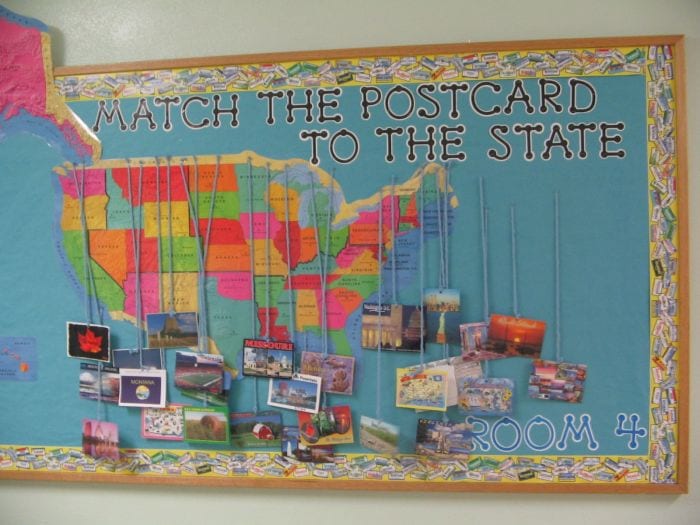
Photo: Francie’s Focus
Now the fun part begins, as your return postcards start to trickle in from around the country! Here are a few classroom activities you might want to try.
- Create a display board for your postcards, using a large map of the United States as an anchor.
- Assemble a list of “state facts” from each postcard, and hold a quiz game to see who remembers the most.
- Have students write about the state they’d most like to visit based on the postcards you receive.
- Locate the address of each postcard on Google Earth, and do a virtual “visit” of the town or landmark.
- Calculate the distance between your school and the location from which each postcard was sent. Talk about the different ways to travel that distance, and how long each might take.
- Read and discuss local news articles from the various cities or states.
Does you hold a classroom postcard exchange? Share your tips in our WeAreTeachers HELPLINE group on Facebook.
Plus, ways to encourage a global perspective in your classroom.

